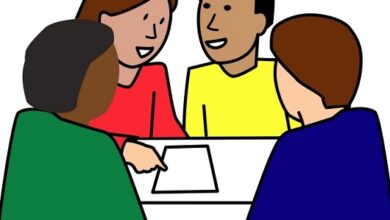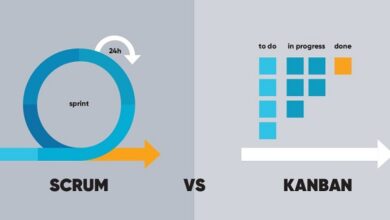What is the customer journey purpose importance Stages Tools
What Is The Customer Journey?
Customer Journey – or Customer Journey – is the path taken by a consumer from the moment he identifies a problem to solve – need or desire – and also its solution, culminating in the stage in which the purchase is made.
As in a board game, each time this potential customer advances a house, he demands a specific action from the company, so that he continues to evolve and, with that, he gets closer to the purchase .
To make the concept even clearer, an example is worth mentioning.
Think about the following situation: Peter’s computer is very slow. The equipment operates too slowly for its usual use.
Pedro then searches the web to find out what the problem could be. It finds different options on what would have slowed down the PC’s functioning.
With the information from one of the sites, he manages to identify the cause for the problem on his computer: it is the size of the RAM memory – which is insufficient.
On the same portal, Pedro is redirected to the possible solutions to the question and tests all of them. However, the PC is still not as fast as he would like.
Pedro follows the next recommendations from that site and discovers that the team that maintains the content also does computer maintenance in his city.
Now, if they were able to identify your equipment problems with such authority, even from a distance, they must solve them in person, right?
That’s how Pedro, then, decides to take his PC for the RAM memory exchange in the website store. And, thus, he has just made the purchase of the services of that portal.
What does this short story teach us?
Notice how Pedro moved from the identification of the problem, possible causes and solutions to the actual purchase.
This is customer journey in practice.
What Is The Customer Journey For?
The customer journey is for companies to identify where people are close to buying. In this way, it is possible to define which sales arguments will be most effective.
In the example above, of Pedro and his slow computer, if a salesperson arrived at the beginning and said that he needed to change the RAM memory of his PC, maybe Pedro would not make the purchase.
This would happen because he was not yet fully convinced of the causes and solutions of the problem.
But, as Pedro walked along the journey, he himself understood that the exchange of memory was important for the proper functioning of the machine.
Thus, the customer journey serves both the marketing and sales sectors.
Check it out:
- Customer Journey to Marketing : It is up to the marketing team to bridge the stages of the journey. For this, you must study the demands in depth, facilitating the transit between one stage and another
- Customer Journey to Sales : A salesperson who knows the customer journey is able to identify which stage he is at. So, when a new person arrives for service, the professional has the right arguments to take them closer to making the purchase.
Importance Of Studying The Customer Journey
Once you understand the concept and practical applications of the customer journey, it is not difficult to measure its importance.
It proves to be fundamental, as it allows mapping the stages that the customer goes through until the purchase and, thus, developing and putting into practice the best marketing and sales strategies .
But don’t just copy the customer journey of a competitor or company you admire.
It is necessary to study the reality of your business and the public that relates to it.
How to do this? Start by knowing the stages of the customer journey, which we are going to present now.
Customer Journey Stages
Just like in a board game , where pins are brought to the end stage by stage, customers change stages within the journey.
Understanding each of the steps is an important part of understanding the process.
From each of its phases, the company is able to identify the best strategies to be used to effect the sale.
Discover the 3 stages of the customer journey:
- Discovery
- Consideration
- Decision.
1. Discovery
In the example of Pedro and his computer, when he realizes that the equipment is slow and that it interferes with his usual activities, the moment of discovery arrives.
The first stage of the consumer journey occurs when a problem, need or desire is identified .
At this stage, the potential customer realizes that something is wrong or has a desire, but is not sure how to resolve this issue.
Therefore, he seeks references , whether on the internet, with friends or family.
In other cases, the reverse path may occur.
When talking to someone, seeing an advertisement or identifying a new fashion, the potential consumer awakens some problem in himself.
And from then on, he enters the journey with a “little push”.
The company’s actions for this stage include providing broad content that attracts the customer‘s attention.
What are the pains, needs and desires of your potential customers?
The answer to that question is your starting point.
2. Consideration
Remember when Pedro did his research on the internet and found that the cause of the slowness was insufficient RAM? This is the consideration stage.
It can be divided into two: problem recognition and solution consideration.
Problem Recognition
It is necessary to understand the cause .
Pedro knew that the PC was slow, but not what was actually causing the problem.
After identifying that the slowness was holding him back (discovery) and knowing what caused it, he moved on to the customer journey.
Now, his problem has a “first and last name” and he is looking for ways to solve it.
Therefore, recognizing the problem is the stage in which the client is able to understand what causes him pain, discomfort, need or desire .
He knows what it is, but not how to solve it.
Solution Consideration
Walking a few houses ahead on the journey board – but without leaving stage 2 -, Pedro began to envision possibilities .
He knew that the cause was insufficient RAM, so he could analyze various outputs.
Thus, he found alternatives on the web to try to solve the computer‘s slowness.
Consideration happens when the customer already knows what really bothers him and, now, analyzes the options for its solution.
The company’s actions at this stage include helping to identify the problem and presenting itself as one of the viable options for solving it.
3. Decision
After the whole process of discovery and consideration comes action .
In the example we used, Pedro decided to take the computer to a PC maintenance company.
It was not a simple process of “waking up” and paying for the repair. He walked step by step until he made the decision to make a purchase of a service.
Thus, the moment of decision, in the customer‘s journey, is when he already knows his need/desire, which alternatives can satisfy him and, among them, the one that best suits him .
Company actions at this stage should seek to reaffirm the buyer’s action and serve them in the best possible way.
In the sales process, it is very common for the team to believe that the customer arrives at the store or gets in touch at the decision stage. However, that doesn’t always happen.
It’s important, then, for salespeople to understand the three steps – discovery, consideration, and decision – to apply the best arguments for each.
Stages Of The B2B Customer Journey
Although the journey has the same stages, the B2B ( business to business ) customer phases may have some minor changes.
While in the B2C market (business to customer) there are companies dealing directly with the desires of users, in B2B, the story is a little different.
Organizations that trade and trade with other companies need to understand their unique purchasing flow .
The motivations that lead a company to buy from another can range from the acquisition of raw material to manufacture products to internal maintenance services, for example.
Thus, the problem/need of the B2B segment is much less susceptible to impulse purchases .
Mapping the customer journey in this market becomes even more important.
With it, suppliers can identify demands and decision makers.
In addition, it has much more solid arguments and strategies to take the customer from discovery, through consideration to purchase.
Learn more about how to handle each of the stages of the B2B customer journey:
- Discovery : What arouses the need to buy the company? What problems might lead you to look for suppliers? How can its internal demand and external consumption motivate it to buy more inputs?
- Consideration : as a supplier, how to be part of this solution appointment? What can be offered to resolve B2B customer issues? How can the supplier become one of the viable alternatives for the buyer? Will it be price, delivery or payment terms, variety, quality?
- Decision : Who is the decision maker? How to persuade him? What arguments to use so that he sees your company as the true solution for what he needs?
Tips On How To Define The Customer Journey For Your Business
To define the customer‘s journey in your company, it is necessary to review the entire journey that he usually takes and study its characteristics.
Thus, both marketing and sales can – and should – ask customers for information ranging from discovery, through consideration, to decision.
A journey can be thought of as a map that shows how people get from point A to point B.
However, there may be alternative routes, shorter or longer paths, more dangerous roads, detours and slowness.
Thus, it is important to understand as much as possible about consumer behavior to try to find out which path it will take.
Here are some tips for designing the customer journey:
1. Perform A Search
Who is your customer? Where do you live, how much do you earn, what do you work with? What are your real needs and desires? What do you expect from the company?
Get real and accurate data about those who buy and consume your offer.
2. Create A Persona
With the information in hand, create a persona that most closely matches the ideal customer profile .
Give her a name, profession, habits and identity.
This makes it easier to develop strategies within the journey.
3. Find The Touchpoints
How can this persona come to discover some problem, need or desire?
Does she search for the solution on the internet, with friends or is she influenced by bloggers, for example?
How can the company be in these places to resolve the issues raised by the customer?
From the answers, build your action plan .
4. Map The Customer Journey
With customer data in hand and your persona finely constructed, you can find out at which touchpoints they look for more information.
Now, it’s time to describe each of the stages of the journey.
See how to proceed:
- Discovery : What kind of need/problem/want can trigger the purchase of the company’s offering?
- Consideration : which benefits offered by the product or service can reach exactly these questions raised by the customer?
- Decision : How, in fact, can the brand’s offer be made explicit to the buyer and make him execute the purchase?
In addition to knowing who the customer is, where they can have contact with the brand and which path they take, it is essential to find out how to move them from one stage to another .
What strategies and arguments can move the client from discovery to consideration and from consideration to decision?
This is the central answer you should get when designing your customer journey.
Tools To Design The Customer Journey
As we have seen so far, the concept of the customer journey is not difficult to understand.
And even to put it into practice, it only requires study, strategy and planning .
In any case, your mission here can get even easier.
There are tools that can simplify the design of the customer journey.
Through the structuring of data , they help in the assembly of the map.
Check out some of the most used for this task:
Customer Journey Example
To consolidate the knowledge acquired in this article, let’s look at another example of a customer journey.
Taking the case of Pedro – who had a slow computer and, for that, took his PC for repairs –, let’s see how a customer journey for this segment would work.
ABC Maintenance of Computers would like to map the process that its customers go through from discovering the problem to purchasing the service.
See how this can be done:
Search
After surveys of current customers and industry studies, ABC has come up with the following data about its customers .
They mostly:
- They are men, 20 to 35 years old
- Have income between BRL 1,500 and BRL 3,000
- Live or work in the neighborhood
- Search the internet for minor maintenance
- Seeking referrals from friends for services
- They have average knowledge about the product.
Persona
ABC, then, arrives at an ideal profile – it is the persona for this audience.
It is as follows:
João, 30 years old, with an income of R$ 2,000, works with the PC. He does minor computer repairs, but still needs more specialized services from time to time.
Points Of Contact
So where can the customer be found ?
João searches the internet, but he also likes referrals from acquaintances.
Thus, a good way for ABC to get in touch with this client is through blog content and by strengthening the image in the neighborhood.
Mapping
The journey is finally mapped out.
See how it turned out:
- Discovery : John has a problem with his PC and he tries to solve it himself. Failing to do so, search for solutions on Google and Youtube.
Action: keep a blog with relevant information about the most common computer problems.
- Consideration : He discovers the real cause and tests new ways, still to no avail.
Action: more specific content on the blog, publicity actions in the locality and a discount program for customer referrals.
- Decision : After a lot of research and talking with colleagues, he decides to take the PC in for maintenance.
Actions: offer delivery and payment terms as expected by the customer.
It is important to say that this is a basic example and that you must define a journey in a personalized way , taking into account the characteristics of your audience and the reality of your company.




